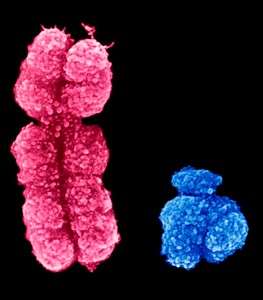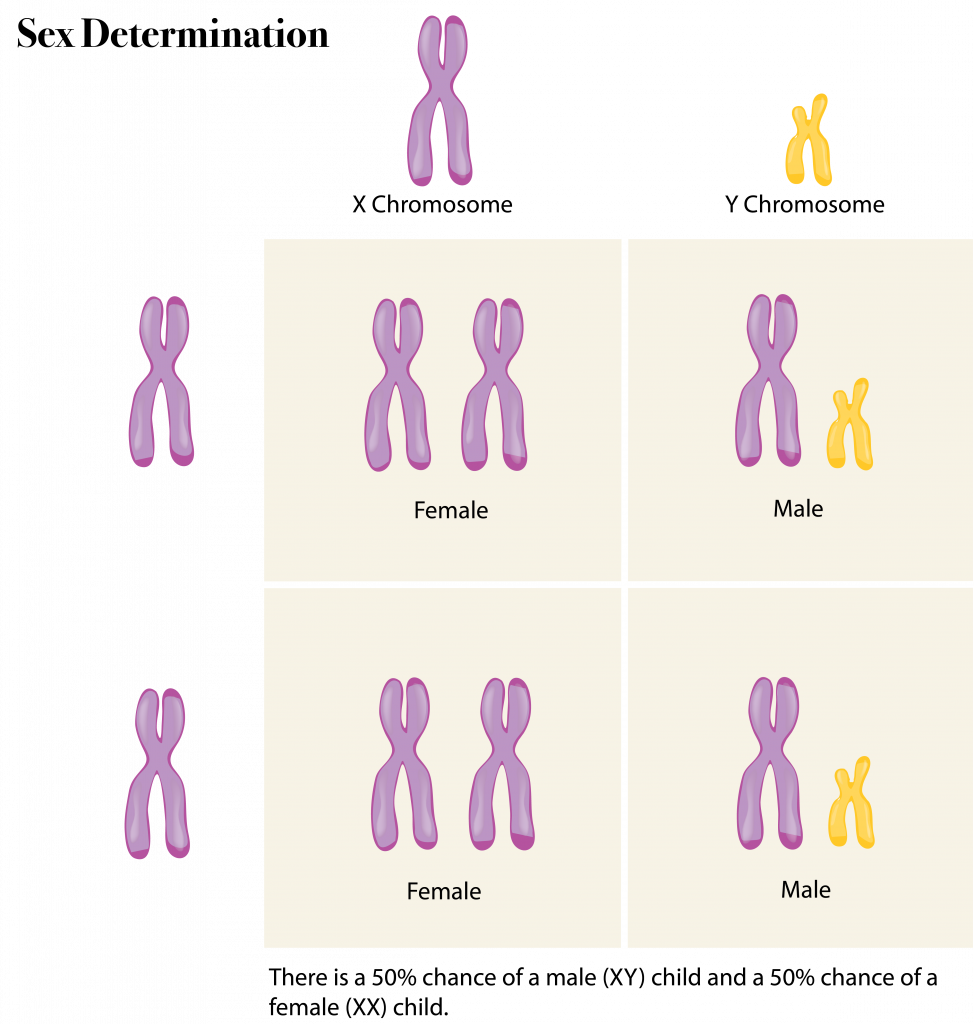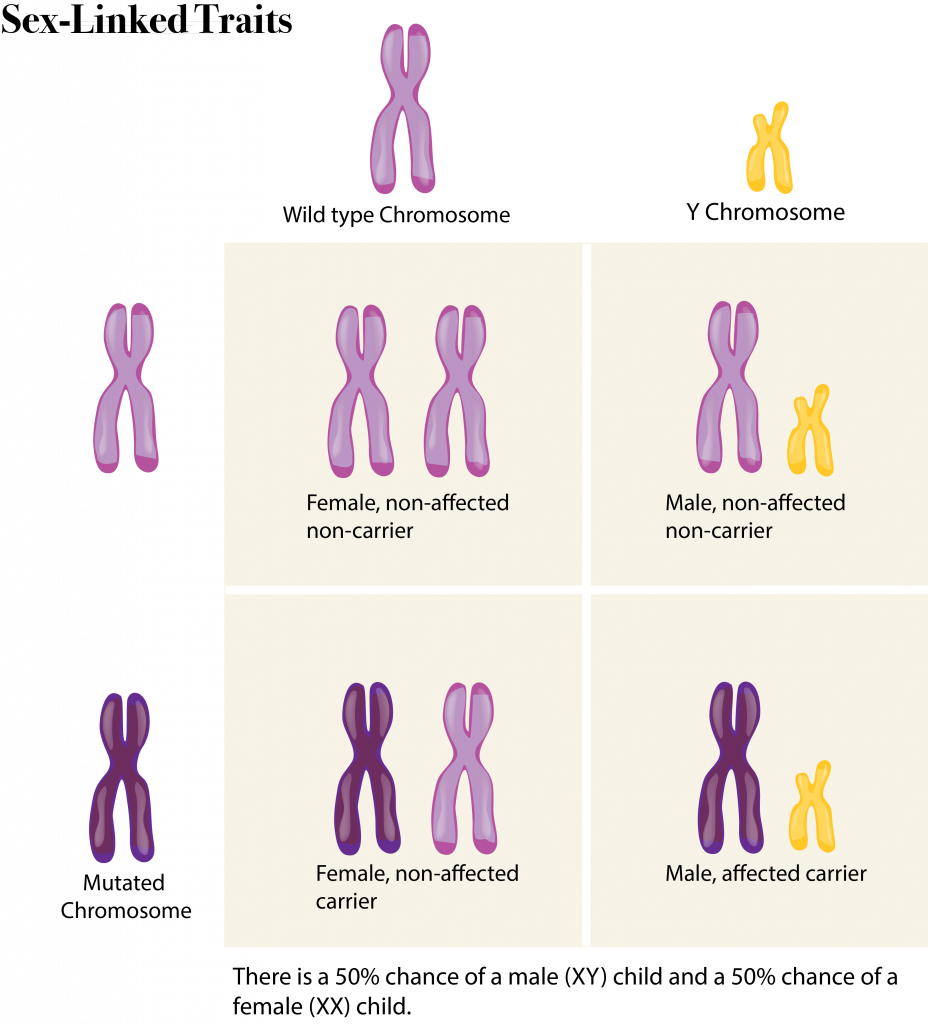6.12 Sex chromosomes

So far, the genes for the traits we have discussed occur on chromosome pairs 1 through 22 in humans. Almost every person has two copies of these chromosomes, one from their mother and one from their father. However, there is one exceptional set of chromosomes: the “sex chromosomes” (or pair 23; see “Understanding homology in humans”). These are known in humans as the X and Y chromosomes, because of their appearance.
Generally, female humans have two pairs of X chromosomes. Like chromosome pairs 1 through 22, each one of these X chromosomes came from one of each of her parents; they are homologues, and code for the same genes in the same locations, but are not genetically identical. For males it’s different. Males still inherit a single X chromosome from their mother. However, this X chromosome is paired with a mismatched Y chromosome that is inherited from the father. The Y chromosome is a fraction of the size of the X chromosome and it houses an entirely different set of genes than the X. The Y chromosome contains genes that provide the genetic instructions for the individual to become a male.

Read More
The non-matching chromosome configuration of the XY chromosomes makes for some unusual inheritance patterns. Recall that for most genes everyone has two copies—one on each chromosome. But for males, there is no second copy of genes on the singular X chromosome or the singular Y chromosome. This means that if a gene on a sex chromosome is defective or different, males have no second copy to compensate for its loss. Any normally recessive mutations will automatically present as phenotypes from the sex chromosomes of males. These traits that manifest themselves automatically in males are called sex-linked traits.

Check Yourself
- https://medicalxpress.com/news/2017-01-insights-infertility-causing-sex-chromosome-disorders.html ↵

